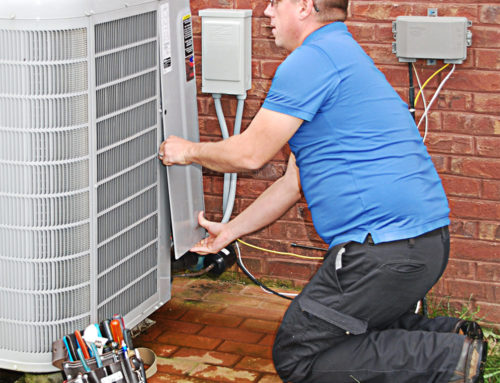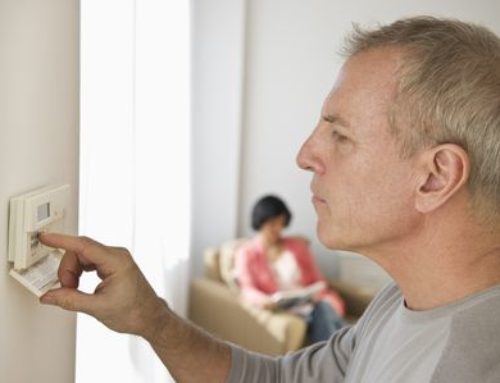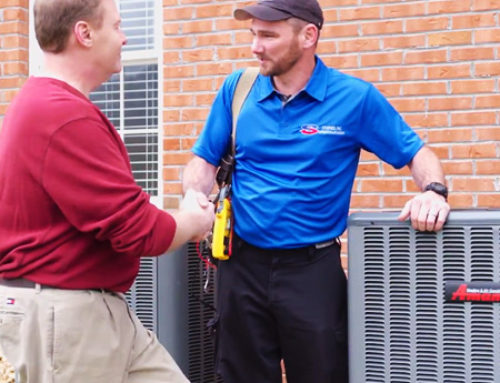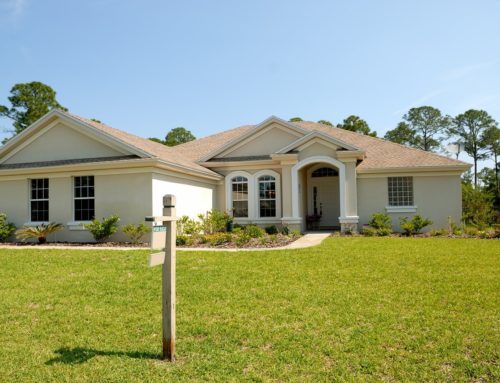
Allergies can make life pretty miserable sometimes. Runny noses, watery eyes, and sneezing fits can make even an easy day seem difficult. If you’re one of the millions who struggles with allergies during a particular season – or even year-round – then you always want to make sure that your HVAC system is properly maintained.
Besides keeping you and your family warm in the winter and cool in the summer, your HVAC system is a major ally in the fight against common allergens such as pet dander, pollen, dust mites and mold. Here are a few tips that will keep your system – instead of your nose – running 24/7.
Simple System Maintenance
HVAC maintenance is not easy, and should be handled by a certified HVAC technician as part of your seasonal home care routine. Several elements of your system can be visually inspected for dust and mold. This is especially important when it comes to filters, which prevent allergens from being pulled in from outdoors or recirculated through the system.
Be sure to replace your system’s filters according to the manufacturer’s standards. Most companies recommend replacing filters every month, and it’s easy to see why – built-up dust and debris lowers a unit’s efficiency, making it work harder to maintain an ideal indoor environment. Keep an extra filter on hand at all times so that when you spot a gray layer of dust on the old one, you have a new, fresh replacement ready to go.
It’s also important to use the right kind of filter. There are several kinds, including:
- Flat panel filters. This type of filter protects your furnace, but doesn’t really improve the quality of the air for those who are sensitive to allergens.
- Medium-efficiency filters. These panels have a Minimum Efficiency Reporting Value (MERV) rating of 5 to 13, and can filter out some particulates that are likely to cause allergies to flare. The higher the MERV rating, the better a filter is at preventing particulates from circulating throughout your home.
- High-efficiency filters. This type of filter is ideal for many types of furnaces. It has a MERV rating of 14 to 16 and will remove most particulates from the environment.
Snuff out the Sniffles with an Air Purifier
If you or someone in your home has severe allergies, one alternative to a system upgrade is a stand-alone air purifier. Look for a model that is HEPA-compatible, and let it strain out the super-small particulates that other filters can miss. Having an independent air filter inside the home can also reduce the amount of dust and other allergens that eventually become caked on the inside of your ductwork.
The Yearly Checkup
Whether your goal is to reduce indoor allergens or to extend the life of your HVAC system, you should have a certified HVAC technician come out at least once a year to perform a system checkup. A technician is able to share advice on what type of filter is best for your HVAC system, your allergies, and whether it’s time to have the ductwork cleaned to help your family stay healthy.
How Ducts Get Dirty
Ducts get dirty, even when you change the filters regularly. How does this happen? Pollen, pet dander – even your own skin cells – are constantly entering the air. Although some particulate settles onto floors and furniture, some of circulates through the air and settles into ductwork.
Help is Close at Hand
If you’re concerned about keeping you and your family safe from pollutants that trigger allergies, it’s not hard to optimize and maintain your HVAC system by making a call to Starnes Inc. If you’re battling allergies and suspect your system is partly to blame, it’s worth the call to keep you or a family member well.






Thank you very much for sharing such helpful information! By the way, the higher the filter rate, the less often it needs to be replaced. The basic recommendation for filter replacement is every 3-4 months for MERV 8, every 6 months for MERV 10 and 11, and every year for MERV 16.
And the higher the filter rate, the cleaner the air in the house. So, MERV 16 indicates that it can remove particles at a size of 0.3 to 1 micron with ease. In simple terms, such filters can remove contaminants such as pollen, mold spores, dust, paint pigment, pet dander, and tobacco smoke.
Thank you! Proper HVAC maintenance also helps keep the right humidity level in a home. Too high level (higher than 60%) can cause mold growth, which is a strong allergen. When humidity drops lower than 40%, mold, mildew, and dust allergens dry up and become airborne. Dry air also dries out the nasal passages, which makes it easier for those allergens to get into your lungs. Chapped lips and dry skin accompany the dry air allergy issues to create a very uncomfortable environment.
If you have an allergy, I would also recommend you pay attention you the air ducts in your home. The air that circulates through your HVAC system often contains humidity that can condense on the interior walls of your ductwork. This provides a source of excess moisture for mold to feed off of. And you know, mold is a strong allergen. Other times, your HVAC system may draw air up from your basement, crawl spaces, and other dark areas of your home that could have some mold.
Nice post to know! A properly maintained HVAC system can help remove allergens from the air in your home, making it a more comfortable environment for everyone. Check out AC Installation.